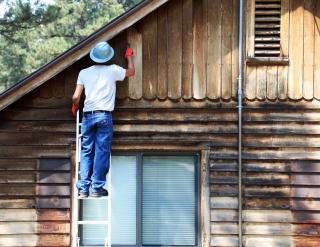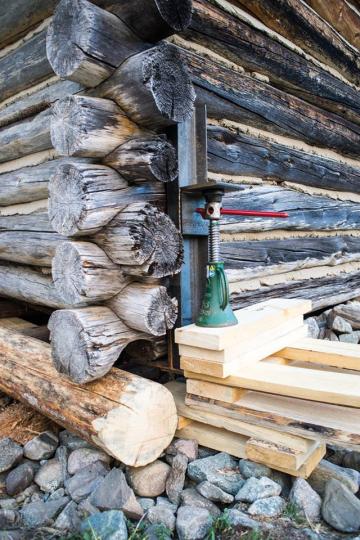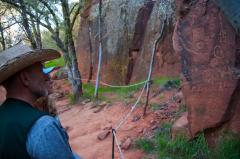Cultural Heritage
The Forest Service has a long history of preservation and discovery through management of cultural resources across 193 million acres of national forests.
These remains of human history include ancient Indian villages and rock art, travel routes and markers, military forts, and abandoned mines and mills. Together, they are part of the nation’s historic and cultural atlas.
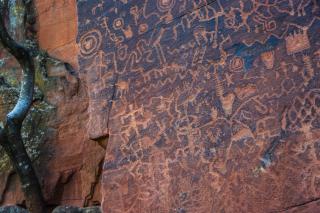
National Heritage Program
The Heritage Program protects and shares significant cultural resources on public lands, ensuring that future generations can understand the human stories present on the landscapes of our national forests and grasslands.
In addition to managing them for public use, enjoyment and education, the Forest Service protects cultural resources from vandalism, theft, fire, and other threats.
The program aims to incorporate our shared history as a part of our recreational experiences and community life.
In partnership with other land managing agencies, local communities, stakeholders, and Tribes, the program contributes to economic and cultural sustainability in a manner sensitive to traditional cultures and local/regional priorities.

“The Congress in 1966 declared it to be our national policy that the Federal government will 'administer federally owned, administered, or controlled prehistoric and historic resources in a spirit of stewardship for the inspiration and benefit of present and future generations.' To this end, the Forest Service will provide leadership in preserving America’s heritage through responsible stewardship activities that recognize, preserve, protect, enhance, and use cultural resources for the greatest public benefit." – USFS Heritage Manual
Heritage Program activities address three broad areas of responsibilities to:
Coordination and consultation with local communities, Tribal governments, and historic preservation organizations ensures that Federal agencies apply consistent criteria to protect cultural resources on public lands as well as manage areas of traditional importance. The Forest Service aims to fully integrate opportunities for preservation, protection, and utilization of cultural resources into land use planning and decisions. |
Evaluating Cultural Resources and Historic Properties
Over the past 3 years, the USDA Forest Service Heritage Program used innovative and creative ways to identify and evaluate historic properties. These methods include using technologies such as light detection and ranging (LIDAR) and ground penetrating radar (GPR); collaborating with Tribes, including Tribal youth organizations; and leveraging the resources of private-sector and university partnerships.
The Forest Service often partners with Tribal youth groups to connect students to their heritage through archaeological identification and stewardship. Click on the tabs below to read more about our on-going partnerships.
To learn more about how the Forest Service, identifies, protects and uses historic properties, visit “Section 3: Improving Federal Agency Planning and Accountability, Executive Order 13287, “Preserve America” – Reports”
- Kenaitze Indian Tribe, Susten Tribal Youth Archaeology Camp
-
For over two decades, the Kenaitze Indian Tribe has hosted the annual Susten [Breaking Trail] Camp on the Chugach National Forest and the Kenai National Wildlife Refuge in Alaksa. Partnering with archaeologists from the Forest Service and the Fish and Wildlife, Tribal teens learn archaeological survey, excavation, and site preservation methods on Tribal ancestral lands.
- Archaeological Study and Conservation of Miller Grove African-American Farming Community
-
The Archaeological Conservancy worked with the McClure family to purchase and transfer 20 acres of land to the Shawnee National Forest to preserve an African-American farmstead – the McClure Family Farm, part of the dispersed antebellum community of Miller Grove. Located in southern Illinois and dating from about 1850 to about 1930, Miller Grove was home to emancipated slaves in the 19th and early 20th centuries. The Millers and others traveled to southern Illinois from several counties in central and western Tennessee, coming together in Pope County, Illinois, to establish this rural farming community.
During the past three summers, the Shawnee National Forest has hosted Southern Illinois University’s (SIU) Archaeological Methods Field School at Miller Grove. In addition to SIU’s summer field school, high school and college students conduct archival research and help with technology transfer using a variety of media products to share the history of Miller Grove.
Heritage Tourism

Over 88 million people visit historic sites each year. Heritage tourism is one of the fastest growing segments in the nation's tourism industry. Visiting heritage sites is ranked among the top 2 or 3 reasons people take vacations.
Tired of sleeping in a tent in a campground? Ever wonder what it's like to sleep in a renovated cabin built in 1908 on a Colorado ranch? Experiences like these are available by renting a US Forest Service Historic Cabin or Fire Lookout.
Passport-In-Time
Passport-In-Time (PIT) is the Forest Service’s most widely recognized volunteer-based program. The PIT program is designed to bring volunteers into Heritage projects with Heritage professionals. Volunteers learn about the national forests and grasslands while working with our archaeologists, historians, paleontologists, and other professionals. PIT projects may include just about any activity including archaeological surveys and excavations, historic structure preservation/restoration, oral history projects, paleontological investigations, archival research, artifact curation, and much more.
This program has been offering life-changing experiences to volunteers across the nation since 1991. Over 35,000 Passport in Time volunteers have contributed over 1,670,000 volunteer hours to Forest Service heritage projects. These volunteers have contributed to vital environmental and historical research on public lands.
Volunteer participation helps us not only protect and conserve the sites, memories, and objects that chronicle our collective past, but it's also educational and crucial to understanding the human story in North America which ensures that these stories story are told to our children and grandchildren.
April 2024 Passport In Time Program Update:
Passport in Time is going through some changes this year. New projects are being advertised through https://www.volunteer.gov. Sign up for an account in www.volunteer.gov to apply for projects and then search the website for federal volunteer projects in the geographic areas of your choice. Use search terms, such as Archaeology, Historic Preservation, or Passport In Time to find projects that fit your interest and experience.
If you have any questions about the Passport In Time Program, please contact the USDA Forest Service at sm.fs.PIT@usda.gov.
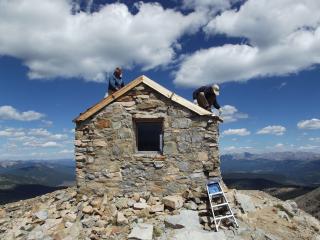
Living History
The Forest Service works to protect and maintain the vast cultural resources that exist within the National Forest System. These heritage resources hold clues to past ecosystems, add richness and depth to our landscapes, provide links to living traditions, and help transform a beautiful walk in the woods into an unforgettable encounter with history.
Over 150 years ago, Chinese railroad workers blasted and chiseled their way through the rugged Sierra Nevada Mountains near Donner Summit on the Tahoe National Forest in California while completing the Transcontinental Railroad. Despite this monumental achievement, the Chinese Railroad Workers’ contribution was excluded, ignored and forgotten from history. Today, grassroots groups are working together with USDA Forest Service to retell this story.

